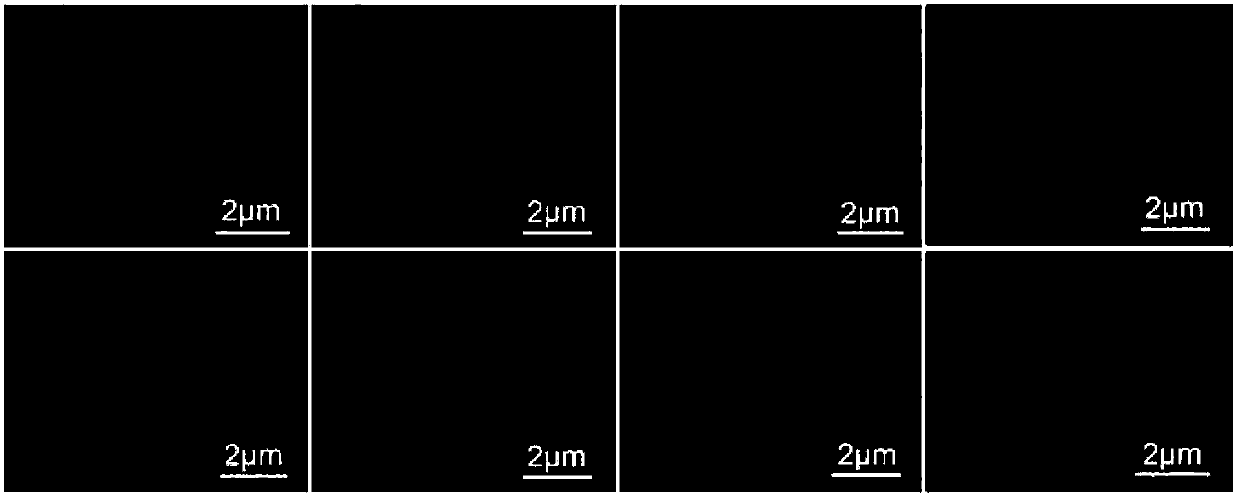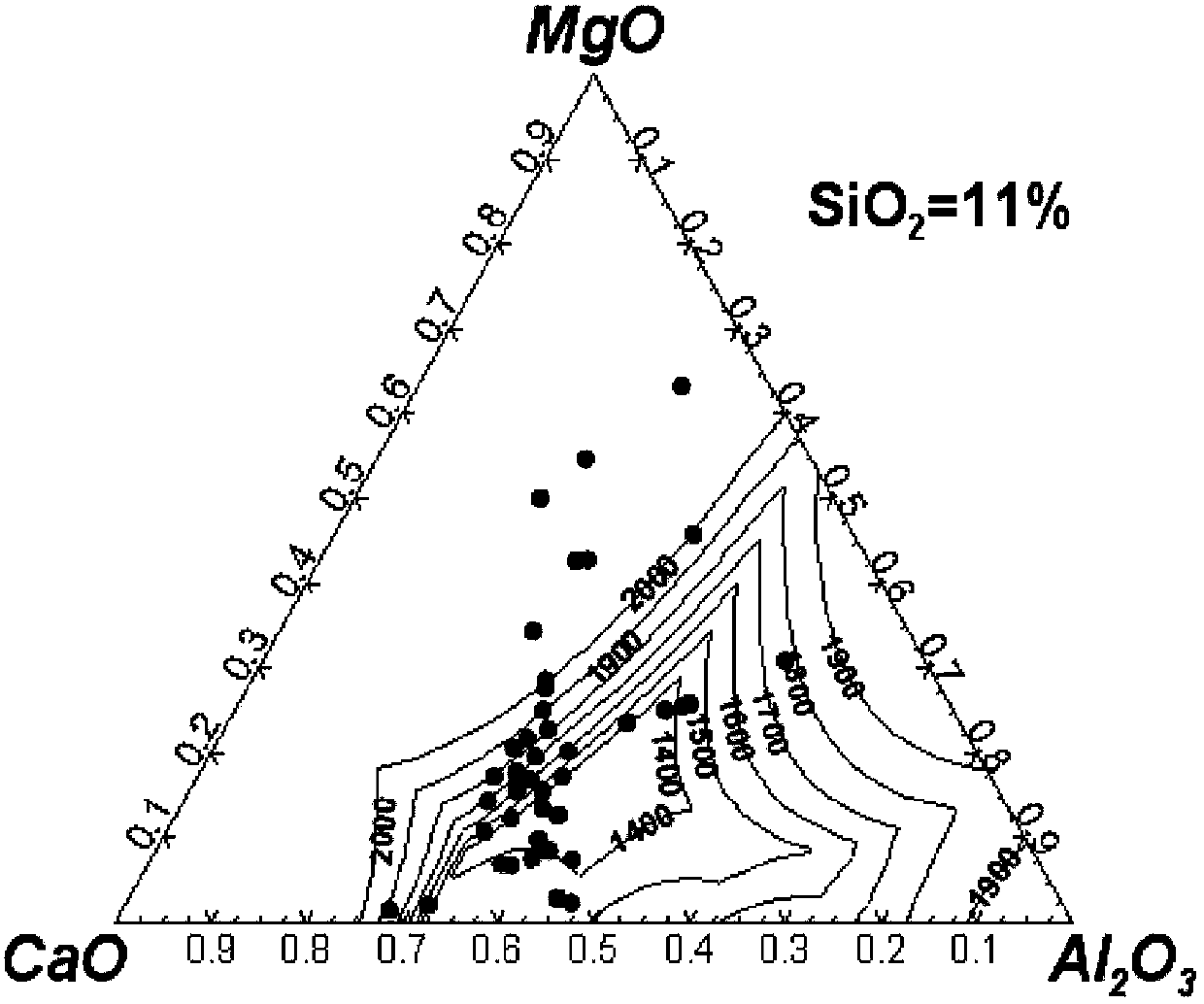Method for controlling low-melting-point inclusion in high-strength low-alloy steel
A technology for high-strength low-alloy and low-alloy steel, which is applied in the field of steelmaking and refining, and can solve the problems of reduced HIC resistance, impact on service performance, and low high strength.
- Summary
- Abstract
- Description
- Claims
- Application Information
AI Technical Summary
Problems solved by technology
Method used
Image
Examples
specific Embodiment 1
[0033] Step 1: Tap steel from a 210-ton oxygen top-bottom combined blowing converter to the ladle. During the tapping process, add 1100kg of aluminum and iron, of which the aluminum content in the aluminum-iron alloy is 40wt%, 900kg of lime, and 240kg of fluorite. It is completed at 1 / 4; the aluminum content in the molten steel is 0.04wt% after tapping.
[0034] Step 2. The basicity of slag in the LF refining process (i.e. CaO / SiO 2 Ratio) is 3.5-5; the composition of slag at the end of slagging (taking the average value of eight heats in this embodiment) is: CaO: 54.79wt%; SiO 2 : 12.31wt%; Al 2 o 3 : 21.37wt%; MgO: 7.82wt%; T.Fe+MnO: 0.52wt%.
[0035] Step 3: After the slagging is completed, carry out desulfurization by blowing Ar gas at the bottom of the ladle with strong agitation, the flow rate of Ar is 1200 Nl / min, and the time of bottom blowing is 15 minutes. At the end of LF refining, the sulfur content of molten steel in eight heats was between 0.0006% and 0.0018%. ...
PUM
 Login to View More
Login to View More Abstract
Description
Claims
Application Information
 Login to View More
Login to View More - R&D
- Intellectual Property
- Life Sciences
- Materials
- Tech Scout
- Unparalleled Data Quality
- Higher Quality Content
- 60% Fewer Hallucinations
Browse by: Latest US Patents, China's latest patents, Technical Efficacy Thesaurus, Application Domain, Technology Topic, Popular Technical Reports.
© 2025 PatSnap. All rights reserved.Legal|Privacy policy|Modern Slavery Act Transparency Statement|Sitemap|About US| Contact US: help@patsnap.com


